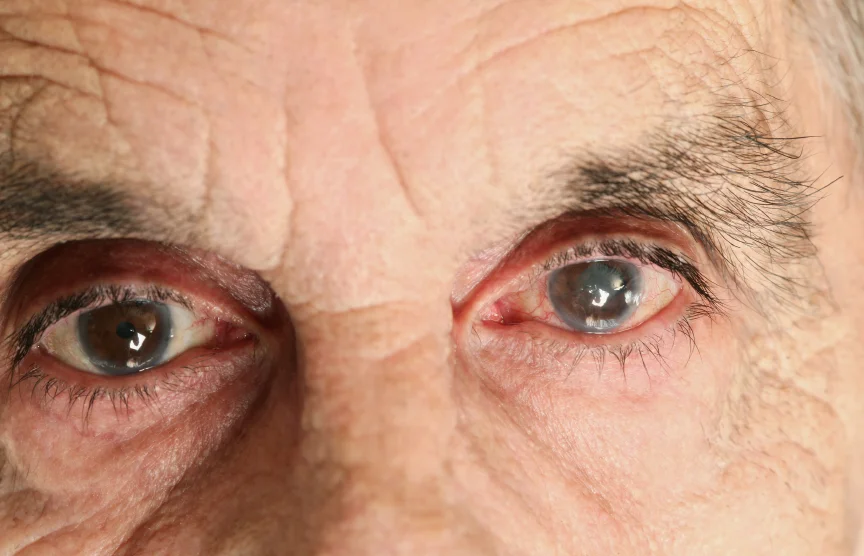Glaucoma Consults: distinguishing physiologic from abnormal cupping & which end-stage eye to operate on first
/Friday April 23, 2010
Please note that all images in this article can be enlarged by clicking on them.
ADDENDUM 08Oct2012: With the migration to the latest version of the Squarespace blogging platform, this is one of many of my articles that has been ruined as the images can no longer be clicked on to enlarge. It would take many more months to manually re-encode these articles so they are now here for historial purposes but not terribly useful with just thumbnails of the images. Future case presentations however will look really good with the updated feature set.
Case 1:
10 yo boy #glaucoma #consult b/o cupping; nerve diameter bigger than avg so physiologic. How often to follow?
This young man was referred by his paediatric ophthalmologist with asymmetrical increased optic nerve cupping for an opinion as to whether he might have early glaucoma damage. He had already had 3 HRT scans over the past couple of years to help establish a good baseline assessment for future comparison. Another reason for some concern was the family history of great aunts and great uncles who have had glaucoma, one of whom was blind as a result.
Visual acuity was 6/6 in each eye with current very small mixed astigmatic spectacle correction with IOP readings of 18 mmHg OD and 16 mmHg OS at 0915hrs and CCT readings of 558 ums OD and 552 ums OS. I was not terribly worried about the optic nerve appearance which I described as “overall increased optic nerve diameter with slight asymmetry of cupping but ISNT rule obeyed and not notched” out in my chart.
Case 1 23Apr2010 HRT OS
Case 1 23Apr2010 HRT OD
Notice on the HRT scans that the overall disc and cup areas are greater than normal, but the rim areas are at the high end of normal. If there really were ‘increased cupping’ as we often refer to glaucoma damage, then we would see an abnormally small rim area as the nerve gets taken over by its cupped out portion. This is physiological increased cupping of the optic nerve.
What would your follow-up plan be for this patient? What do you think of the family history and would this effect your management?
Case 3:
Case 3 23Apr2010 VF OD
Case 3 23Apr2010 VF OS
73 yo WM #glaucoma #consult end stage left eye, mod adv right; IOP 26 on meds - which eye for Trabeculectomy 1st?
This is a discussion that I end up having too often; glaucoma surgery on the eye that is almost blind so the last bit of vision is not snuffed out or on the less damaged eye so that it doesn’t get worse. There are pros and cons to each approach and the answer is very much individualized to the patient.
This patient was referred by another ophthalmologist for surgery due to abnormal visual fields, progressive optic nerve damage with a note that the IOP was still elevated in the left eye after a recent change in glaucoma medications. He is taking Duotrav, Lumigan in addition to 10 other systemic medications for cardiovascular disease, bipolar disorder, colitis, and Parkinson’s-like symptoms from prior meds.
Visual acuity was 6/15 OD and 6/21 OS without correction, improving to 6/12 OD and 6/7.5 OS with multiple pinhole correction. His corneas were moderately dry, anterior chambers of moderated depth, and 2+ nuclear sclerotic cataracts were present. Eye pressure readings were 24 mmHg OD and 25 OS with CCT readings of 532 ums OD and 527 OS. Angles were open to at least the posterior trabecular meshwork and both optic nerves extensively cupped out.
Given this degree of optic nerve damage, the eye pressure is not ideal in either eye. Using the Advanced Glaucoma Intervention Study (AGIS) findings, we really want the eye pressures to never be 18 or higher in either eye if this can be achieved safely. Going back therefore to the initial question, which eye would you operate on first?
Case 4:
44 yo XXY #glaucoma #consult14D myope, increased cupping, normal disc diam, IOP 16, on Atenolol (systemically Tx’ing IOP?) N VF. Glaucoma?
This patient was referred by their optometrist because of increased cupping of his optic nerves, more so in the right than left eye. Systemic medications include ASA, gemfibrozil, propafenone and atenolol. He had a cardiac conduction defect that was ablated at one point but his AV-node was damaged during the ablation.
Visual acuity was noted to be 6/7.5 OD and 6/9 OS with his current spectacle correction of -11.75 -0.50 x 043 OD and -14.25 -0.50 x 153 OS. Trace cataract findings were present, IOP readings 15 OD and 16 OS at 1015hrs with CCT of 511 OU. Angles were moderately pigmented with a clear view to the ciliary body band OU. Optic nerves as seen in the HRT nerve scans and Visual Fields as attached are normal.
Compare these HRT findings with the first patient that had the physiologic increased cupping. Notice here how the rim area is impacted and therefore, despite the normal Visual Fields, this patient likely does have glaucomatous damage. However, he also has been taking a systemic beta-blocker, Atenolol, which means he has been treating his eye pressures by the heart medication.
The following two cases were tweeted as per below but there is enough material to discuss with the above cases for this week so no additional material is provided.
Case 4 23Apr2010 HRT OS
Case 4 23Apr2010 HRT OD
Case 4 23Apr2010 VF OS
Case 4 23Apr2010 VF OD

